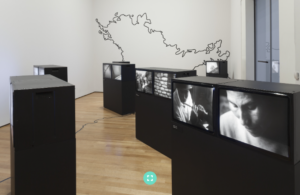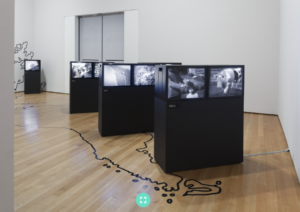Art and Anthropology explores artworks created by people and societies around the world; how these fit into a surrounding community, how they may be presented and spoken about, and how we place value onto said works. The question came up of formal education and if this is a crucial or potential direction to go in to become an artist. Perhaps aesthetics can help anthropologists to determine and identify various cultures and to dig deep within differing or consensual cultural arrangements and mechanisms? Anthropology, being rooted in research and fieldwork, is vital to learn; concerning data, observation and ethics. Collaborations between art and differing fields like anthropology, has the potential to create research as art and art as research. As art research continues to thrive within increasing research-based MA/PHDs, we have the dilemma of resolving what this means and if it is possible to reach a consensus between fields; the artwork could problematically become the outcome. ‘If the experience of art lies in the appreciation of its visual or sensory form, how can this be captured in writing without losing or distorting the essence of the experience?’ (Craig Cazeaux) A remedy to this may be the approach of auto-ethnography: ‘Autoethnographic writing allows a researcher to situate her body in relation to others to comprehend cultural realities’ (Julie-ann scott). Creative ways of storytelling and configuring text to capture images can be an effective way to procure empathetic and humanistic reactions from a viewer and materialise a moment in a way that brings us closer to the voices relaying them.
Juan Downey

September 5, 2015–January 3, 2016. IN2335.70. Photograph by Thomas Griesel.

September 5, 2015–January 3, 2016. IN2335.68. Photograph by Thomas Griesel.
Transmissions: Art in Eastern Europe and Latin America, 1960–1980 focuses on parallels and connections among artists active in Latin America and Eastern Europe in the 1960s and 1970s. During these decades, which flanked the widespread student protests of 1968, artists working in distinct political and economic contexts, from Prague to Buenos Aires, developed cross-cultural networks to circulate their artworks and ideas. Whether created out of a desire to transcend the borders established after World War II or in response to local forms of state and military repression, these networks functioned largely independently of traditional institutional and market forces.- MoMA (https://www.moma.org/calendar/exhibitions/1532 )
Videos Trans Americas (1976)- fourteen video monitors placed geographically on a large printed map outline of the floor and wall of the gallery. Downey immigrated to the United States from Chile in 1965 and quickly became an integral member of a dynamic lower Manhattan community of artists experimenting with the new medium of video. In 1973 he embarked on a three-year series of journeys to South America, motivated by a personal longing to reconnect with his roots and a utopian vision of fostering a transnational Latin American identity. Video Trans Americas comprises footage from Mexico, Guatemala, Peru, Bolivia, and Chile, where Downey documented native cultures. He challenged the power dynamics of traditional ethnographic documentary by sharing his recordings with his subjects, whom he considered to be his collaborators, involving them in the production process and questioning his own position as an outsider. -MoMA (https://www.moma.org/collection/works/167193?)
How can you authentically capture a place, society or culture for others to see and learn from? Using film to create an individual archive of an own experience and expose a largely unseen sense of identity. How does this fit into a wider archive of ethnographic identity? Downey challenged the power dynamics of this by ways of inclusion connection and coherence with subjects, his collaborators. The layout of this work is vital in how the content is communicated to audiences. Visitors walk around a large map that covers the floor and walls, the placement of videos indicating where they are captured. I believe this makes the content of the films more interesting and engaging to audiences who walk around these elevated screens as if walking amongst people. This also highlights the personal nature of each individual film and promotes the importance of locality of place to the overall work.
References:
art, research, philosophy. Craig Cazeaux. 2017, pg.3
embodied performance as applied research, art and pedagogy. Julie-ann scott. 2018. Chapter 1.
https://www.moma.org/collection/works/167193?


Leave a Reply